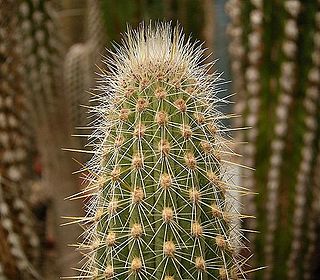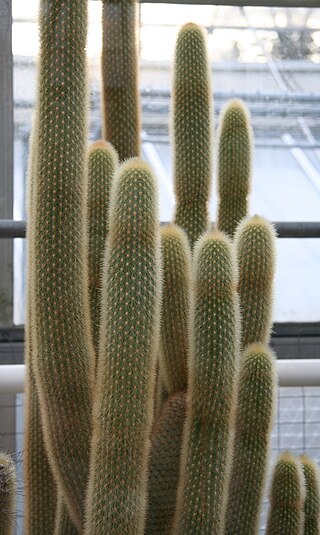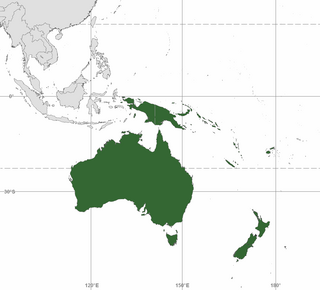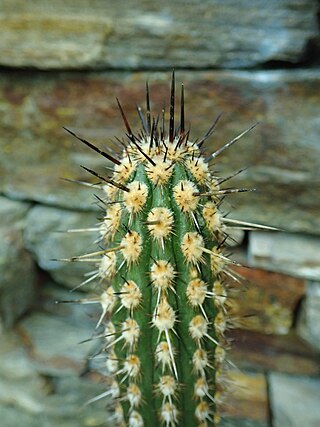
D, or d, is the fourth letter of the Latin alphabet, used in the modern English alphabet, the alphabets of other western European languages and others worldwide. Its name in English is dee, plural dees.

A language family is a group of languages related through descent from a common ancestral language or parental language, called the proto-language of that family. The term "family" reflects the tree model of language origination in historical linguistics, which makes use of a metaphor comparing languages to people in a biological family tree, or in a subsequent modification, to species in a phylogenetic tree of evolutionary taxonomy. Linguists therefore describe the daughter languages within a language family as being genetically related. The divergence of a proto-language into daughter languages typically occurs through geographical separation, with different regional dialects of the proto-language spoken by different speech communities undergoing different language changes and thus becoming distinct languages from each other.

M, or m, is the thirteenth letter of the Latin alphabet, used in the modern English alphabet, the alphabets of other western European languages and others worldwide. Its name in English is em, plural ems.

Killed in action (KIA) is a casualty classification generally used by militaries to describe the deaths of their own personnel at the hands of enemy or hostile forces at the moment of action. The United States Department of Defense, for example, says that those declared KIA did not need to have fired their weapons, but only to have been killed due to hostile attack. KIAs include those killed by friendly fire in the midst of combat, but not from incidents such as accidental vehicle crashes, murder or other non-hostile events or terrorism. KIA can be applied both to front-line combat troops and to naval, air and support troops.

A cousin is a relative that is the child of a parent's sibling; this is more specifically referred to as a first cousin.

Scorpio (♏︎) is the eighth astrological sign in the zodiac, originating from the constellation of Scorpius. It spans 210–240° ecliptic longitude. Under the tropical zodiac, the Sun transits this sign on average from October 23 to November 21. Depending on which zodiac system one uses, someone born under the influence of Scorpio may be called a Scorpio or a Scorpionic.

Weberbauerocereus is a genus of ceroid cactus, considered to be intermediate between the genera Trichocereus and Cleistocactus. The genus is named after Augusto Weberbauer because of his extensive research in the Peruvian Andes. The genus is native to Bolivia and Peru.

The Cactoideae are the largest subfamily of the cactus family, Cactaceae, and are widely distributed throughout the Americas. Cactaceae is the 5th most endangered plant or animal family evaluated globally by the International Union for Conservation of Nature. Around 80% of cactus species belong to this subfamily. The genera of the Cactoideae are characterized by microscopic foliage leaves. All photosynthesis occurs in shoot cortex cells covered by a persistent epidermis and stomata. Another important characteristic of this subfamily is ribbed stems, which enable the inner cortex to expand radially without breaking the shoot surface to absorb large quantities of water.

The long-snouted bat is a species of bat in the family Phyllostomidae. It is the only species within the genus Platalina. It is endemic to northern Peru and northern Chile. It feeds almost exclusively on the nectar and fruit of the columnar cactus. The species is rare, but has a wide distribution with at least 25 populations, and is listed as near-threatened due to habitat loss causing the removal of their primary food source.

In botany, succulent plants, also known as succulents, are plants with parts that are thickened, fleshy, and engorged, usually to retain water in arid climates or soil conditions. The word succulent comes from the Latin word sucus, meaning "juice" or "sap".

Haageocereus fascicularis commonly known as 'Quisco de la precordillera de Arica' is a species of cactus from the family Cactaceae. It is endemic to southern Peru and northern Chile.

Australasia is a subregion of Oceania, comprising Australia, New Zealand, and some neighbouring islands in the Pacific Ocean. The term is used in a number of different contexts, including geopolitically, physiogeographically, philologically, and ecologically, where the term covers several slightly different but related regions.

Weberbauerocereus cuzcoensis is a species of Weberbauerocereus from Peru.

Weberbauerocereus johnsonii is a species of Weberbauerocereus from Peru.

Weberbauerocereus rauhii is a species of Weberbauerocereus from Peru.

Weberbauerocereus cephalomacrostibas is a species of cactus in the family Cactaceae. It is found in Arequipa Department, Peru and consists of 2 subpopulations.

Weberbauerocereus albus is a species of Weberbauerocereus from Peru.

Weberbauerocereus winterianus is a species of Weberbauerocereus from Peru.
Weberbauerocereus churinensis is a species of cactus in the genus Weberbauerocereus, native to Peru.


















